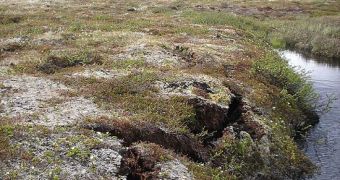Permafrost is known as one of the most important sources of methane and carbon dioxide on the planet. The dangerous greenhouse gases are locked inside the frosty soils, but global warming can easily bring them out. A new study now looks at how permafrost thaws in its most sensible sectors.
For the investigation, the team selected the Yukon Flats, which are located near Fort Yukon, in Alaska. The region is important because it lies on the boundary between continuous permafrosts to the north and areas of discontinuous permafrost to the south.
Studying how much of these soils lies at a specific location used to require a significant volume of work, which included drilling random boreholes and analyzing the samples retrieved in this manner.
But scientists at the United States Geological Survey (USGS) took a different approach. In the airborne survey, researchers tracked the weak magnetic fields produced by the permafrost in the presence of even weaker electrical fields.
This allowed them to produce highly-detailed map of permafrost distribution in the Yukon Flats at depths up to 328 feet (100 meters). Obtaining such a dataset by traditional methods would have required months of continuous digging.
“Liquid water conducts electricity better than ice. We can detect from the air the weak magnetic fields generated by those electric currents, thus distinguishing quickly and easily melted from frozen ground,” explains Marcia McNutt, the director of the USGS.
“This new technology, and the maps of changing permafrost, will be valuable for both climate change research and engineering in the challenging Alaskan environment,” the top official goes on to explain.
The new research effort is detailed in the latest issue of the esteemed journal Geophysical Research Letters. The paper was authored by USGS Crustal Geophysics and Geochemistry Science Center geophysicist Dr. Burke Minsley.
By understanding permafrost dynamics and thawing patterns, investigators will be able to compile more accurate models of the hydrologic and ecologic consequences of global warming and climate change. This is important because permafrost can easily trigger a vicious circle.
The more CO2 and methane it releases, the warmer the temperatures get, and the more GHG are released as a result. Climate scientists warn that the development of this self-sustaining circle needs to be prevented at all costs.

 14 DAY TRIAL //
14 DAY TRIAL //